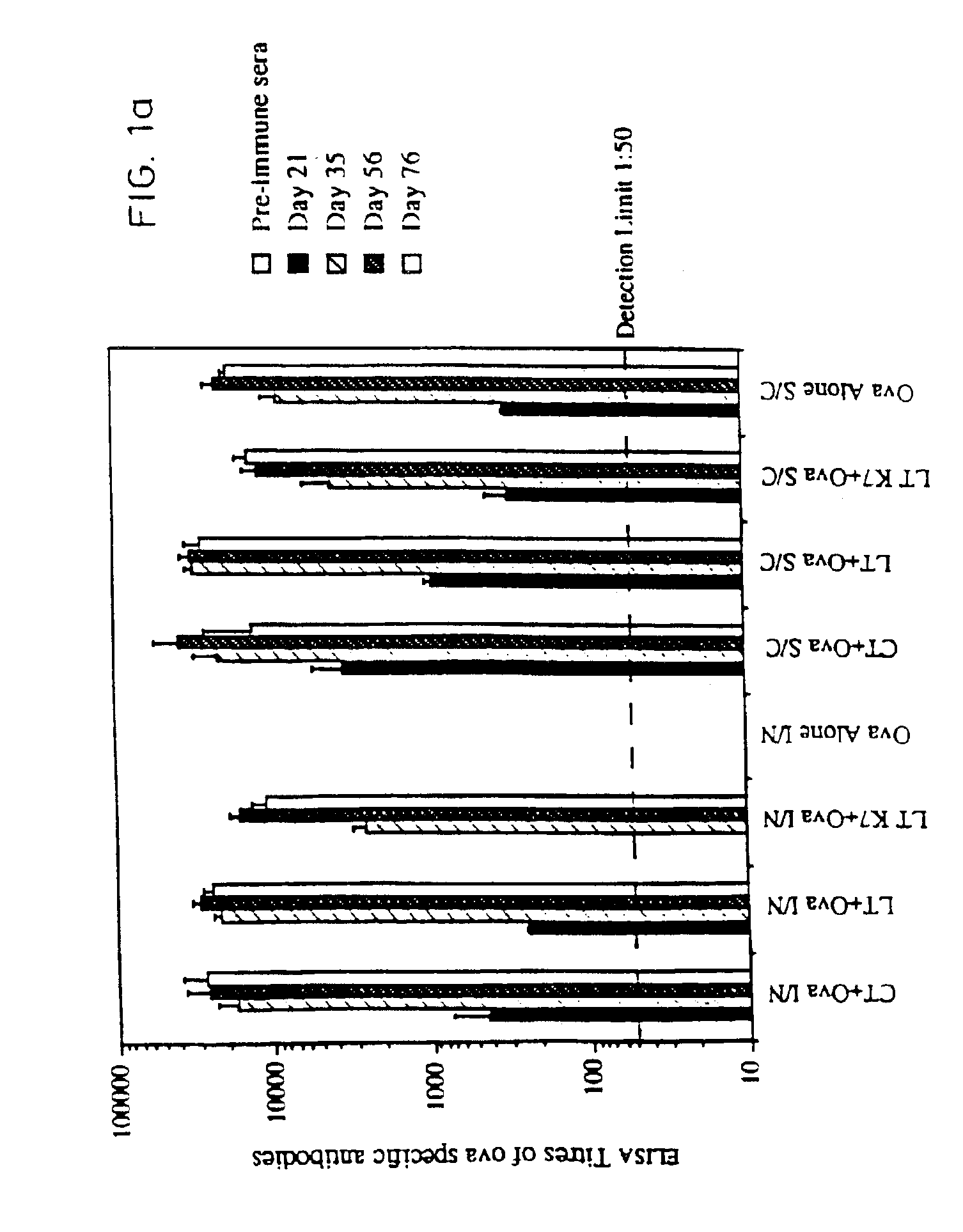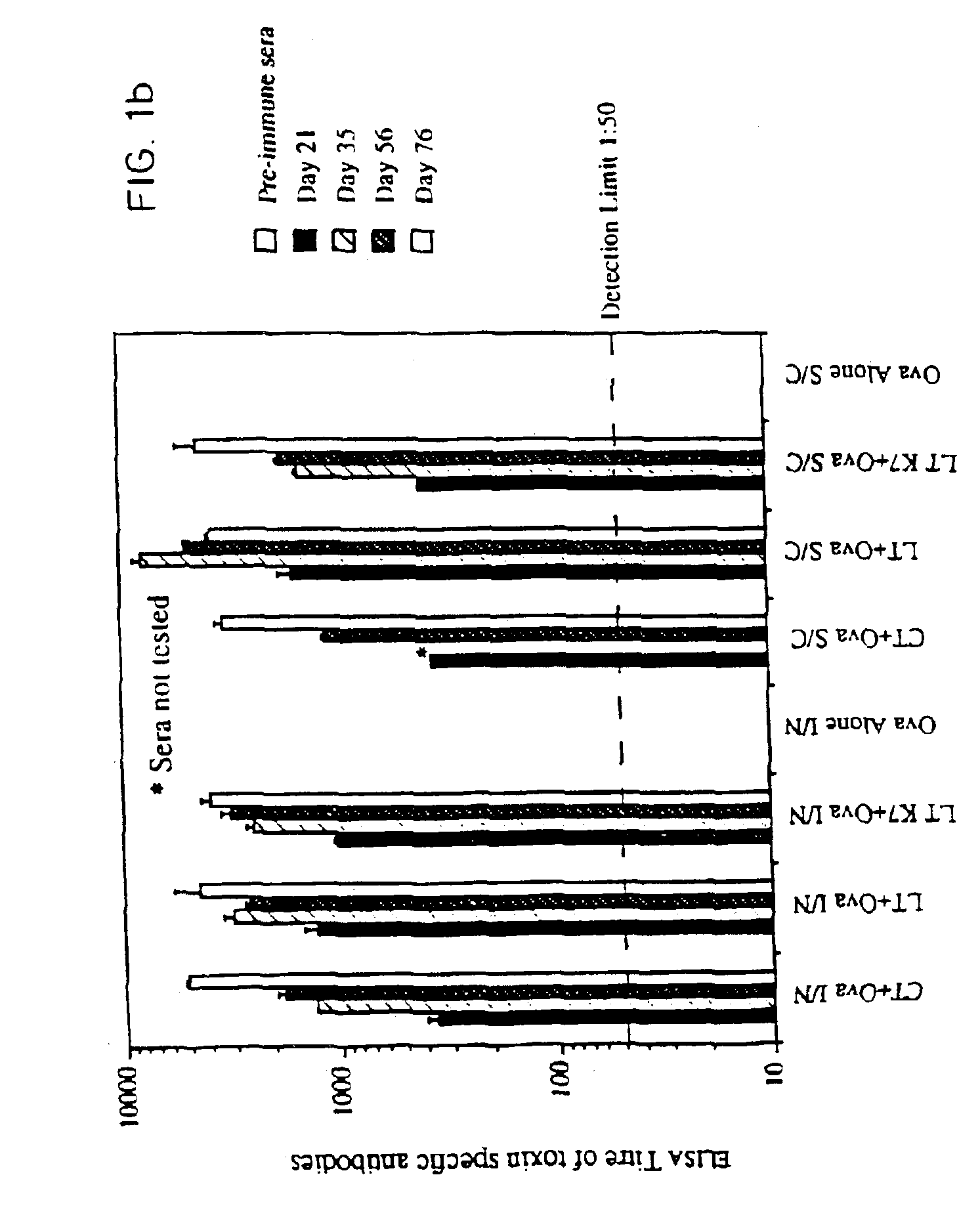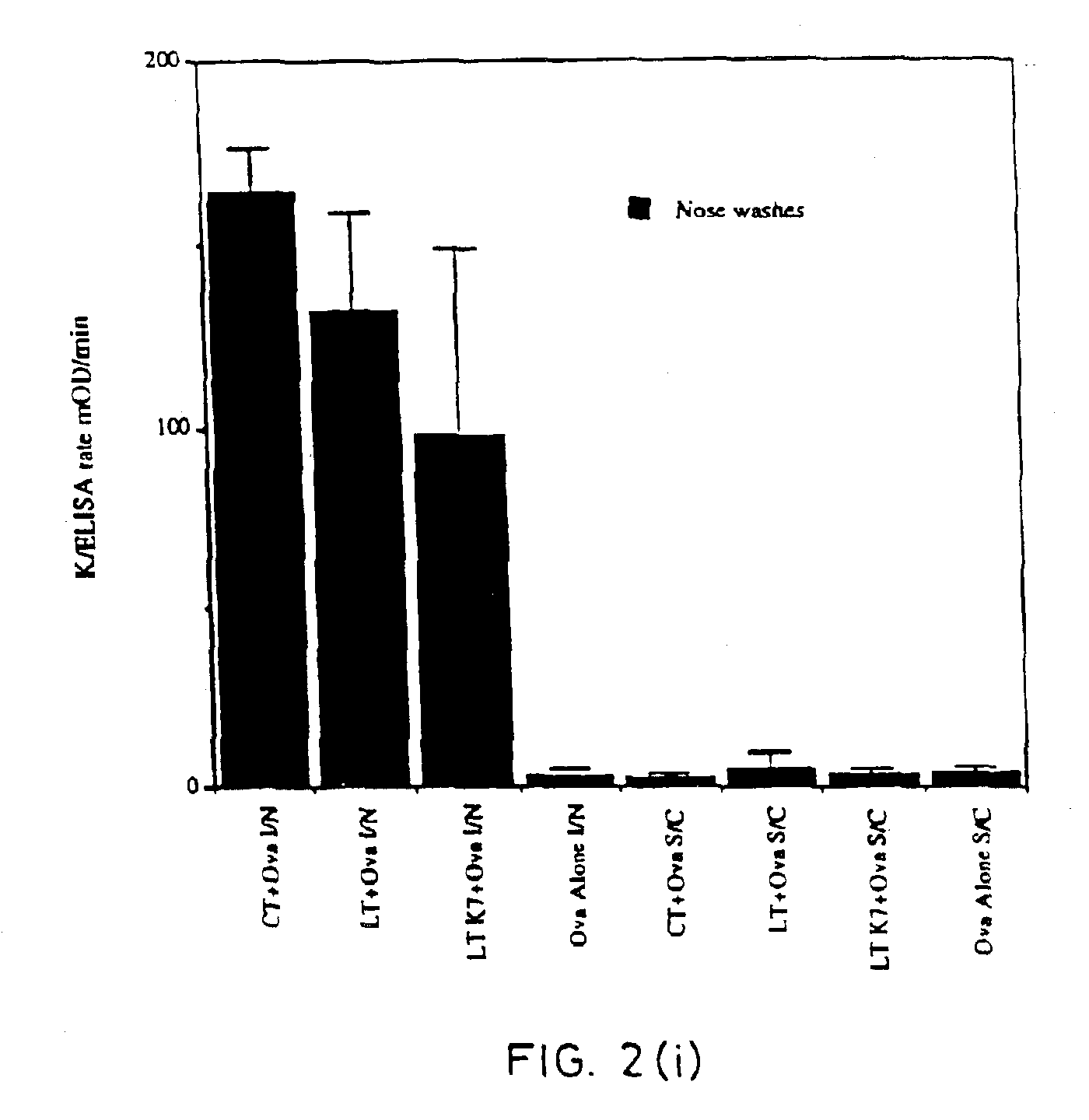Nontoxic mucosal adjuvant
a technology of mucosal adjuvant and mucosal adsorption, which is applied in the field of adjuvants, can solve problems such as taking into account, and achieve the effect of increasing the immunogenicity of an antigen
- Summary
- Abstract
- Description
- Claims
- Application Information
AI Technical Summary
Benefits of technology
Problems solved by technology
Method used
Image
Examples
Embodiment Construction
[0067]Site-directed mutagenesis was used to replace the arginine residue at position seven of the A subunit of LT with lysine in order to construct a non-toxic LT mutant that could still assemble as a holotoxin with cell binding activity. The mutant protein, named LTK7, was purified and tested for ADP-ribosyltransferase and toxic activity in several assays. LTK7 was still able to bind GM1 ganglioside receptor but showed a complete loss of enzymatic activity, in agreement with published data (Lobet et al., Infect. Immun. 1991; 59:2870-2879). Further, LTK7 was inactive in the mouse ileal loop assay and in vitro on Y1 cells, even when a dose equivalent to 107 toxic units of wild-type LT was tested (Table 1).
In vivo and in vitro Properties of LT and of LT K-7 Mutant
[0068]
TABLE 1LTLT-K7LT / LTK7Codon in position 7 of theCGTAAG—A subunitAminoacid in position 7ArgLys—of the A subunitADP-ribosyltransferase0.06 μg>>20 μg−3*activity of the A subunitIn vivo in mouse ileal 10 μg>>500loopμg / mouse...
PUM
| Property | Measurement | Unit |
|---|---|---|
| volume | aaaaa | aaaaa |
| total volume | aaaaa | aaaaa |
| time | aaaaa | aaaaa |
Abstract
Description
Claims
Application Information
 Login to View More
Login to View More - R&D
- Intellectual Property
- Life Sciences
- Materials
- Tech Scout
- Unparalleled Data Quality
- Higher Quality Content
- 60% Fewer Hallucinations
Browse by: Latest US Patents, China's latest patents, Technical Efficacy Thesaurus, Application Domain, Technology Topic, Popular Technical Reports.
© 2025 PatSnap. All rights reserved.Legal|Privacy policy|Modern Slavery Act Transparency Statement|Sitemap|About US| Contact US: help@patsnap.com



